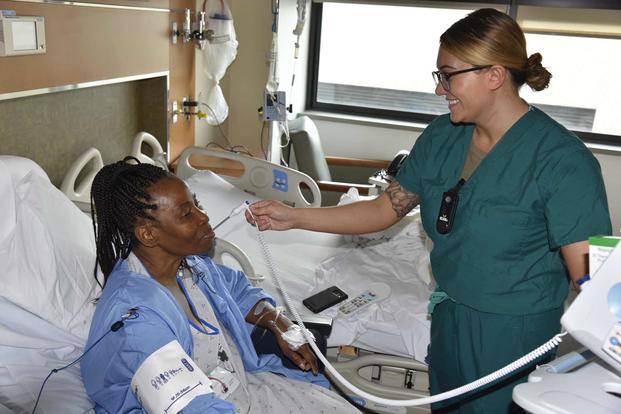Tricare beneficiaries in select regions in the southeast U.S. will be the first to try out a plan that will, in some cases, let them go to other bases for specialized treatment instead of going to the private sector.
The Defense Health Agency's first four markets will be in the D.C.-Maryland-Virginia area; Jacksonville, Florida; along the Mississippi coast; and in Fayetteville, North Carolina. Mirroring the civilian sector, these markets will have military clinics within a certain geographical area share patients, budgets and staff, regardless of military service branch.
The change is part of a military health system merger mandated by Congress three years ago to improve patient health care while keeping costs low and eliminating redundant functions.
"For the patients, I don't really see any [downside]," DHA Dir. Lt. Gen. Ronald Place told Military.com in an interview Jan. 2. "The same rules about drive time - that sort of thing - will be the same rules within the market. The potential downside is actually for our staff."
Related: Some Retirees Have Already Been Pushed to Off-Base Providers in Tricare Shift
Drive time for Tricare Prime beneficiaries is limited to no more than 30 minutes to get to their primary-care physician and no more than an hour to reach specialty care.
The change to markets will mean base physicians and specialists will have to travel between facilities within a market, as they're expected to in the civilian sector, he added.
"So if I'm a surgeon and I'm working at Walter Reed and the expectation is I'm going to do some ambulatory surgery out at Fort Meade ... I may have to spend some time going between the two different facilities as opposed to just working all day at Walter Reed, all day, every day," he said. "That's the expectation in the civilian world. And we've not done that as a military medical staff."
Military hospitals and clinics in the pilot areas have been sharing a budget and staff since Feb. 1. The number of markets will eventually grow to 21 large markets, which will take care of nearly two-thirds of the Defense Department's patients, and 16 small markets. There will be about 65 stand-alone markets for more remote areas.
More information on how military treatment facilities will be divided into markets can be found here.
-- Dorothy Mills-Gregg can be reached at dorothy.mills-gregg@military.com. Follow her on Twitter at @DMillsGregg.
Read More: Navy EOD Tech Awarded Silver Star for Saving Comrades During ISIS Fight













